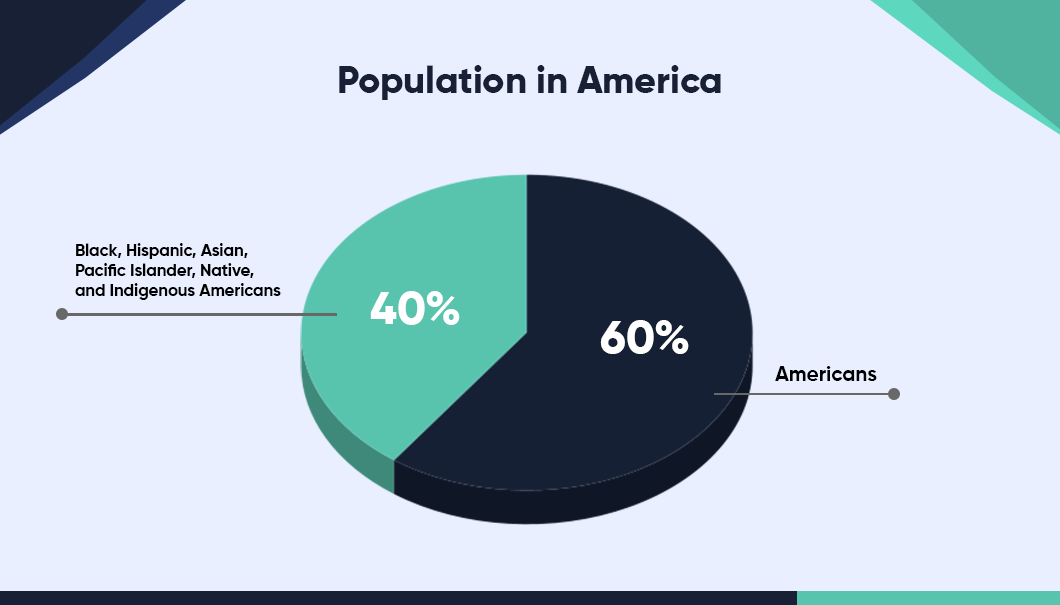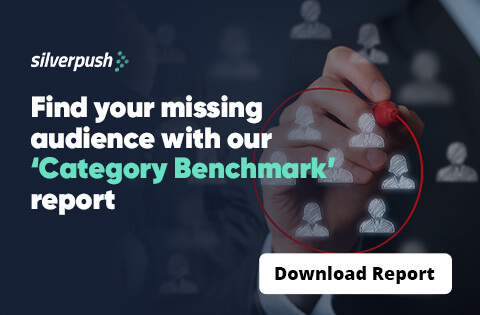Why Do You Need Interactive Dynamic Video Advertising and How to Get Started?
PUBLISH DATE: 21 July 2023
With around 4.9 billion internet users worldwide, representing 62% of the global population, people are exposed to 6,000 to 10,000 advertisements daily.
A staggering amount, isn’t it?
However, the human brain struggles to process such an overwhelming amount of content, leading to ads being ignored or forgotten. To improve consumer attention, brands must adopt effective practices.
Audience engagement has been declining on the standard video ad formats. Today’s audience demands more than just passive viewing experiences.
Let’s delve into this in our article and understand the advanced stage of video advertising – Dynamic Interactive Ads.
What are Interactive Video Ads?
Dynamic interactive video ads are a type of video ad that allows viewers to interact with the ad in a more meaningful way. This can be done through a variety of means, such as clicking on different parts of the ad, dragging and dropping elements, or answering questions.
These types of advertisements provide numerous benefits compared to traditional static video ads. They possess a higher potential for engagement, resulting in increased click-through rates (CTRs) and conversions. Moreover, they offer greater personalization options, enhancing the ad’s relevance to the viewer.
It’s Time Make the Switch to Interactive Video Ads
“According to studies, brands can increase their consumer engagement up to 3X with just 15-second interactive ads.”
Interactive dynamic video advertising is a powerful tool that can help advertisers create stronger ad recall. Still not convinced, here are a few pointers highlighting the advantages of interactive video ads.
1.Increased Engagement: This form of video ads can help to increase engagement by making the ad more interactive and engaging. This can lead to higher click-through rates (CTRs) and conversions.
2. Better Targeting: These video ads can be targeted to specific audiences based on their interests, demographics, and purchase history. This can help to ensure that the ad is seen by people who are most likely to be interested in it.
3. Improved Brand Awareness: They can help to improve brand awareness by making the ad more memorable and engaging. This can lead to increased brand recall and consideration.
5. More Personalized Experiences: Interactive dynamic video ads can be personalized to each viewer, which can help to create a more relevant and engaging experience. This can lead to higher CTRs and conversions.
6. Scalability: This form of video advertising can be easily scaled up to reach a large audience. This is because they can be created and delivered in a programmatic fashion, which means that they can be automatically served to relevant viewers based on real-time data.
5. Cost-effectiveness: It can be more cost-effective than traditional video ads. This is because they can be targeted to specific audiences, which means that they are less likely to be wasted on people who are not interested in them.
Having grasped the compelling advantages of using interactive video ads for their next campaign, let’s explore the essential steps to get started:
Steps to Get Started with Interactive Video Advertising
1. To embark on a successful interactive video ad campaign, advertisers should follow a well-structured approach.
2. Begin by selecting a suitable platform and tools that support interactive video ads.
3. Clearly define campaign objectives, outlining whether the focus is on brand awareness, lead generation, or conversions.
4. Understanding the target audience is paramount; this knowledge will shape the design of interactive elements that resonate with viewers.
5. Craft compelling and visually appealing content to maintain audience interest.
6. Design user-friendly interactions to ensure seamless engagement.
7. Thoroughly test the ad’s compatibility across various devices and browsers before launch.
8. Once the campaign is live, monitor performance metrics and user interactions to make data-driven optimizations.
Leverage Crafters to Boost Your VTR and CTRs
Dynamic video optimization is of utmost importance as it revolutionizes the effectiveness of video advertising campaigns.
By leveraging real-time data and user insights, it allows advertisers to tailor their video content to each viewer, delivering a highly personalized and relevant experience.
This level of customization not only captures the audience’s attention but also fosters a deeper emotional connection with the brand or product.
As a result, viewers are more likely to engage with the ad, leading to increased click-through rates, conversions, and overall campaign success. Lose the green screens, manual video post-production, and patched overlay text.
Crafters, a dynamic video optimization solution by Silverpush, allows you to control every component of the ad and strategy, with endless customization options for superior video personalization and seamless re-editing.

Not Just your Regular Creative Optimization!
Crafters suggest & curate custom dynamic elements as per the brand’s specific needs.
Engage Consumers ‘In the Moment’ with Crafters
Crafters enable the creation and delivery of personalized video ads to users by leveraging various sources of data.

It tailors ads based on location, language, contextual triggers, and content segment which results in giving users a much more personalized and relevant ad experience.
For example, a paint brand can give users an authentic experience of how a particular color would appear.
Conclusion
The advertising landscape is rapidly evolving keeping advertisers on their toes. In these evolving times, they need a solution that delivers better results and boosts their brand awareness. Dynamic Interactive Video Ads are one way to attract users effortlessly and achieve significantly higher CTR and VCR. It’s time to evolve your advertising strategy and stay ahead.
The Power of Multicultural Advertising: Reaching Diverse Audiences
PUBLISH DATE: 24 May 2023
USA minority groups buying power is expected to rise from 4.2 trillion in 2020 to 7 trillion by 2025. With this significant growth, brands cannot afford to overlook the importance of targeting multicultural communities in their advertising strategies.
In this blog, we will explore why brands should focus on diversity, how they can effectively reach multicultural communities, and the benefits of doing so.
Why is Multicultural Advertising Important?
Brands aspire to capture the hearts of millions and establish a lasting brand recall as their primary objective. Yet they miss out on a larger portion of the audience.
Multiculturalism has played a significant role in this endeavor, showcasing its positive impact on our daily lives. This can be observed through the fusion of diverse cultures in ethnic enclaves found in metropolitan areas and the availability of various ethnic cuisines in supermarkets. One of the driving forces behind the market expansion in the past decade has been the multicultural consumer market, currently valued at over $5 trillion.
The corporate expansion serves as a pivotal factor in this growth, benefiting all brands. As markets expand, more consumers enter the fray, leading to increased consumption and fostering innovation by introducing new products. This, in turn, promotes higher usage and the potential for premium pricing. When executed effectively, this generates greater revenue and income, consequently enhancing purchasing power.
A renowned brand from the FMCG industry had a boost in sales in North America. Interestingly, a larger portion of their sales was accounted for by diverse communities of the region.

What is Multicultural Advertising?
Immigration encompasses more than mere physical mobility; it represents the dynamic exchange and interplay of diverse cultures. Each individual carries the bedrock of their identity, fostering the emergence of vibrant and multicultural communities.
Expanding Horizons: Beyond the LGBTQ+ Community
While many advertisers focus solely on the LGBTQ+ community when it comes to multicultural advertising, it’s essential to remember that diversity encompasses various ethnic groups. In the United States, Black, Hispanic, Asian, Pacific Islander, Native, and Indigenous Americans makeup 40% of the population. It is crucial for brands to recognize and target the entire multicultural communities to maximize their reach and impact.
How can Brands Reach Multicultural Communities?
The advertising arena is under evolution. The phase-out of third-party cookies has inclined advertisers towards contextual advertising. Since cross-culture targeting poses a set of challenges that are hard to overcome with conventional targeting methods, contextual targeting methods can be beneficial.
Some of the challenges are:
1. Cultural Sensitivity: Multicultural communities are sensitive towards their presence. Brands must understand their diverse cultural nuances and sensitivities. They must ensure that their message resonates with the viewer.
2. Language Barrier: Brands need to ensure that their message is tailored well according to the specific group they are targeting. Understanding the intricacies of each culture is crucial for creating effective campaigns that resonate with the target audience.
3. Limited Reach and Targeting: Traditional advertising channels often need to be improved when it comes to reaching specific multicultural audiences. Targeting these communities through one or more channels can be complex as they may cause hindrances in targeting methods.
To overcome these challenges, advertisers can leverage Silverpush’s advanced AI technology, Mirrors. This offers enhanced brand safety and suitability, allowing advertisers to reach their desired audience contextually and through different platforms.
YouTube
To begin with, the best way to reach the audience is through video advertising. Did you know, 82% of the global content consumption is from videos. With contextual video advertising, brands can easily tap into the audience as the AI offers the first context detection based on the identification of key context like brands name from metadata for granular targeting.
Open Web
Conventional targeting created voids that further created challenges for brands to reach their desired audience. But by analyzing the page’s content in real-time and combining relevant information, it provides personalized advertising, filling the gaps.
Meta
Sentiment analysis and NLP tools search countless Facebook pages to find the most contextually appropriate video material. Mirrors target high-performing sites by correlating context relevance with engagement metrics (likes, shares, comments, and subscriptions).
Brands can effectively reach their audience while respecting their privacy by utilizing contextual advertising, which capitalizes on the reader’s existing interests and aligns ads with the content they consume. This contrasts with behavioral targeting methods that can leave users feeling monitored and followed.
Conclusion
According to a survey, 64% of consumers agreed that they engaged with a brand after seeing an ad that they considered diverse or inclusive.
Multicultural communities have long-awaited recognition and representation, and they can be found across the globe. One prominent example is the city of New York in the United States. Known as a melting pot of various cultures, people from all over the world call New York home. Its remarkable diversity is one of its greatest strengths and contributes to its status as a leader in creativity and innovation. Similarly, Toronto in Canada and London in Europe are home to diverse communities.
When it comes to advertising, it is crucial to recognize that multicultural communities should not be targeted as a one-time or occasional effort. Instead, brands should strive to engage with these communities consistently throughout the year. These diverse communities represent the future audience, and establishing a meaningful connection with them is essential to staying ahead of the curve in an increasingly diverse world.
By understanding and embracing the multicultural nature of society, brands can tap into new markets, foster inclusivity, and build lasting relationships with diverse audiences.







